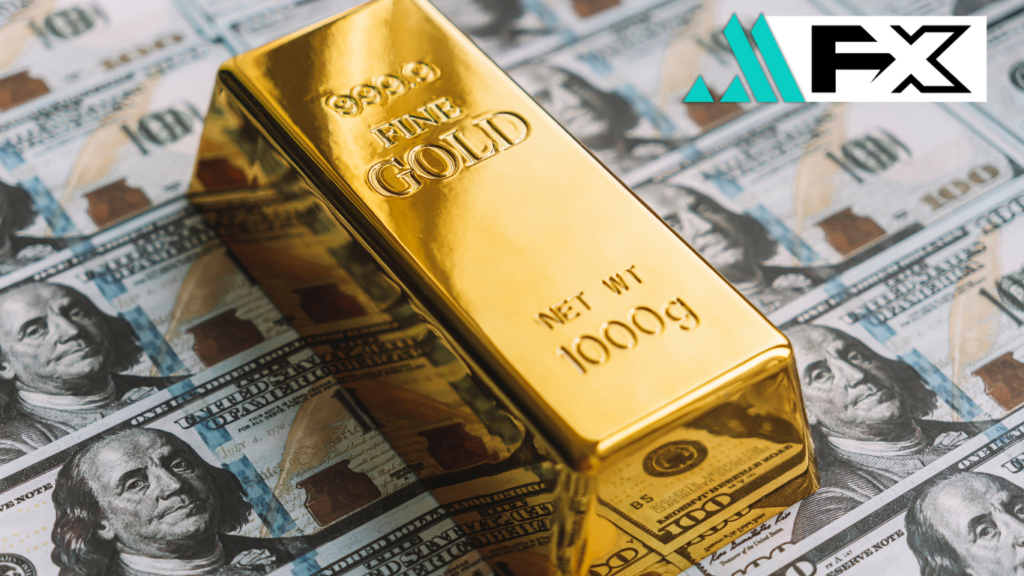Gold rallied sharply in Asian trading on Wednesday, driven by renewed investor demand for safe-haven assets after the U.S. imposed sweeping new tariffs on Chinese imports. The move has escalated trade tensions and heightened fears of a broader economic downturn.
Spot gold rose 1.6% to $3,031.02 per ounce, while gold futures for June delivery jumped 1.9% to $3,046.61—marking the strongest intraday gains in over two weeks. This recovery comes after gold briefly dipped below the $3,000 mark earlier in the week, amid broader market volatility.
The surge in gold was triggered by a cumulative 104% tariff on Chinese goods, which includes a new 50% hike announced by President Donald Trump on Tuesday. The aggressive policy, intended to target key industrial sectors, ignited a global risk-off sentiment.
Adding to gold’s momentum was a 0.7% drop in the U.S. Dollar Index, which fell to a six-month low, making bullion more attractive to foreign investors. As a non-yielding asset priced in dollars, gold typically benefits when the greenback weakens.
Trade Tensions Boost Safe-Haven Demand
Investors are growing increasingly cautious amid escalating geopolitical and trade risks. The fresh wave of U.S. tariffs, effective immediately, targets not only China but also other major economies:
- European Union: 20% duty
- Japan: 24%
- Vietnam: 46%
- South Korea: 25%
- Taiwan: 32%
China’s Ministry of Commerce responded with a stern warning, stating it would “fight to the end,” hinting at potential retaliatory measures. Markets are now closely watching Beijing’s next move and any policy shifts from the Federal Reserve, especially with recessionary signals flashing across multiple indicators.
Gold’s recent price action underscores its traditional role as a hedge in uncertain times. With equity markets under pressure and bond yields fluctuating, investors are turning to hard assets for protection.
Other Metals React to Trade Shock
While gold led the charge, other metals reflected the broader market’s response:
- Silver Futures: Rose 1.8% to $30.21 an ounce
- Platinum Futures: Gained 0.5% to $916.65
- Copper Futures (LME): Fell 0.6% to $8,595/ton
Copper, often seen as a barometer for industrial demand, slipped on concerns over China’s role as the world’s largest copper consumer. Any trade restrictions affecting its economic output could depress global demand for industrial metals.
Conclusion:
Gold’s rebound is more than just a technical correction—it signals deep market anxiety over escalating trade disputes and potential economic fallout. With global tensions rising, safe-haven demand may continue to support bullion prices in the near term.


